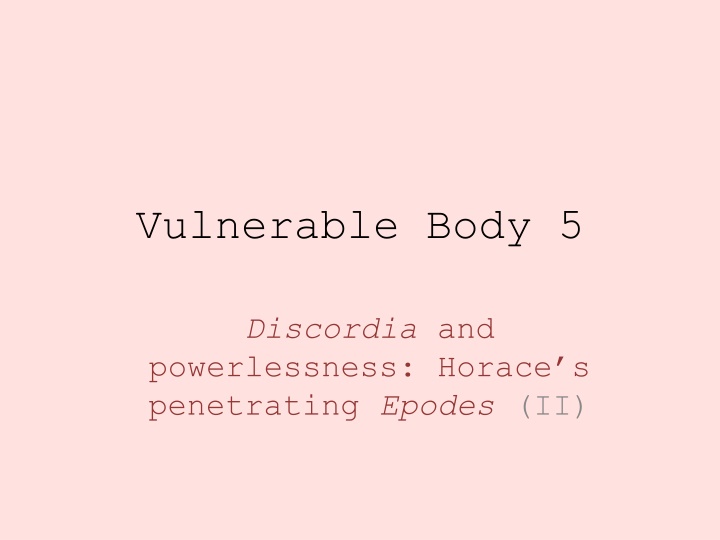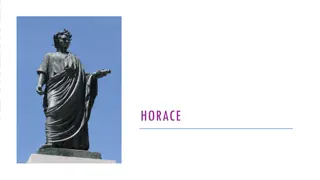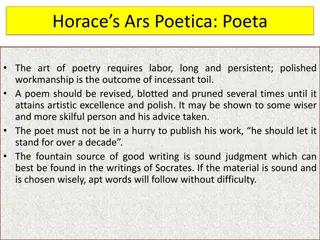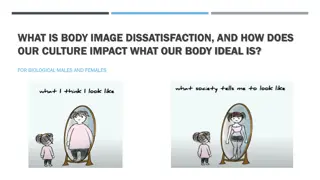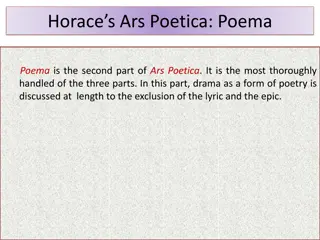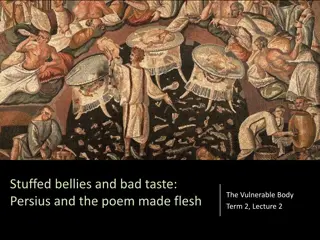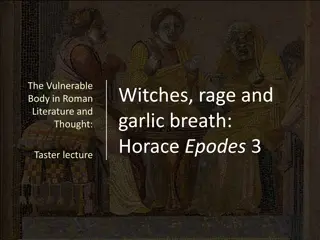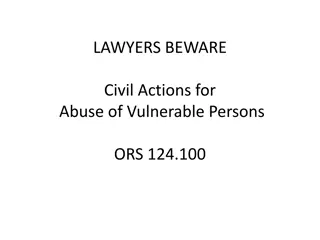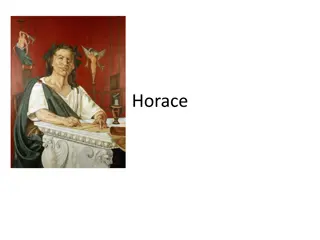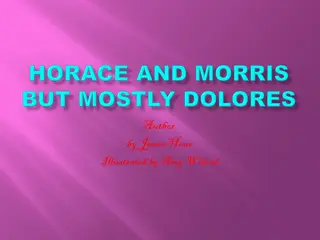Vulnerable Body 5: Horace's Penetrating Epodes
Exploring themes of vulnerability, powerlessness, and the intertwining of personal trauma with poetic expression in Horace's Epodes. The poet's compromised position as a son of a freedman influences his work, reflecting on bodily weakness and societal precarity. Analysis includes the role of witches, hags, and the portrayal of female desire as animalistic in nature.
Download Presentation

Please find below an Image/Link to download the presentation.
The content on the website is provided AS IS for your information and personal use only. It may not be sold, licensed, or shared on other websites without obtaining consent from the author.If you encounter any issues during the download, it is possible that the publisher has removed the file from their server.
You are allowed to download the files provided on this website for personal or commercial use, subject to the condition that they are used lawfully. All files are the property of their respective owners.
The content on the website is provided AS IS for your information and personal use only. It may not be sold, licensed, or shared on other websites without obtaining consent from the author.
E N D
Presentation Transcript
Vulnerable Body 5 Discordia and powerlessness: Horace s penetrating Epodes (II)
The Epodes: Themes so far Horace not an objective, distanced commentator on current events, but a compromised, traumatised participant. The poet veers between male self- mastery/effeminate subjection. Abuse poetry seems to both respond to that victim status and perpetuate it, while of course trying to make victims of others Horace makes the genre/form of iambic poetry inseparable from his own precarity as son of a freedman who was on the losing side in the civil wars. BODILY vulnerability is an ongoing theme: bodily weakness translates into and comes to stand for all kinds of other vulnerabilities.
Canidia: witches and hags Etymologies/connected words: canities (white or grey hair, old age), canere (to sing), caninus (dog-like, snarling, biting), canis (dog). Epodes 5, 17; Satires 1.8 (plus Epodes 3, 6, 8, 12, Sat.2.1, 2.8). Notice Canidia s role at the end of the both the Epodes and the Satires. Compare the biting, vengeful iambic poet at Epodes 6 (atro dente, 6.15; dens ater, 8.3)
Villa del Cicerone, Pompeii
Epode 8 How do lines 2-14 of Epode 8 shape and constitute the old woman s body? In the battle for rhetorical/oral supremacy, who wins?
Epode 12 1. Compare and contrast Epode 12 with Epode 8. 2. Watson p386: It is evident that the primary function of such beast- analogies, when applied to sexually active women, is not, as Richlin has claimed, to dehumanize their subject, but rather to intimate that female lust is animal-like in character: that is to say, dangerous, intemperate and insensate Do you agree? 3. What is the effect of the poet-lover being compared to an animal (lamb, deer) in the final lines of Epode 12?
